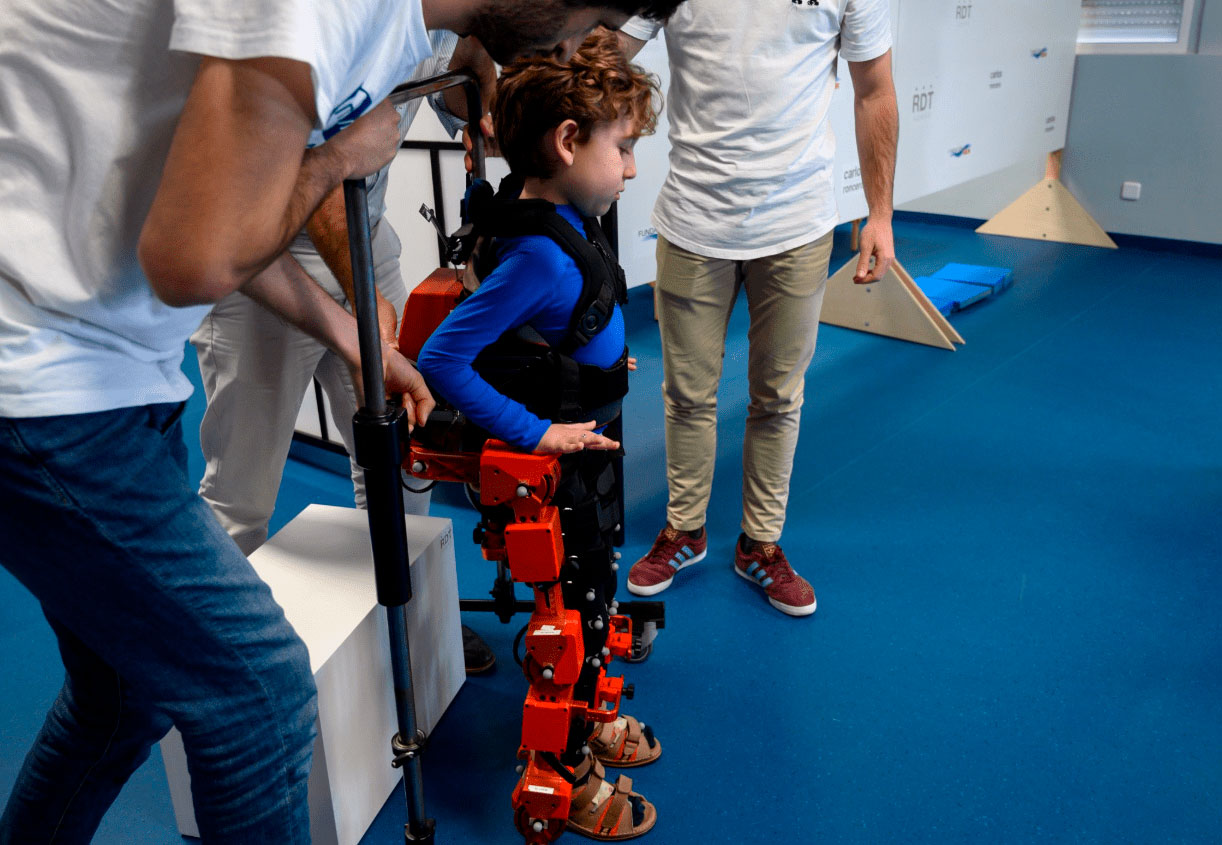A hospital in Madrid, Spain, presented on July 3 a pediatric exoskeleton whose intention is to assist in the mobility of children with cerebral palsy. One of the innovations of the device is that it has a helmet that obeys the brain stimulation of patients when they start walking.
The so-called CP-Walker 2.0 exoskeleton is a tool to train the most upright posture of those affected, and to manage the coordination of their muscles well, explained Ignacio Martinez, consultant at the Neuroortopedia unit of the Niño Jesús Hospital in Madrid, where it was presented. It has a motor on the hip, another on the knee and certain adjustments to control the trunk.
Cerebral Palsy is the most frequent neuromuscular disease – its incidence is between two and three cases per 1,000 live births. In this sense, research with stem cells continues to demonstrate the many uses that it could represent, such as the infusion of total intrathecal nucleated cells from bone marrow that improves the neurological evolution of pediatric patients with cerebral palsy; which coul help the patients that are undergoing other types of therpies, like useing the CP-Walker 2.0. This treatment is currently carried out at the University Hospital of the Autonomous University of Nuevo Leon; at the hands of Dr. Consuelo Mancías Guerra.
Source: EFE




